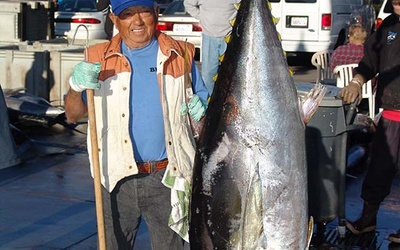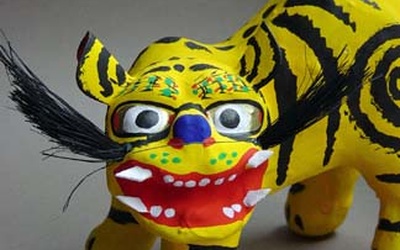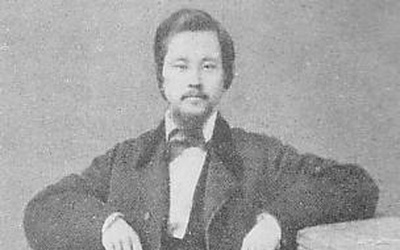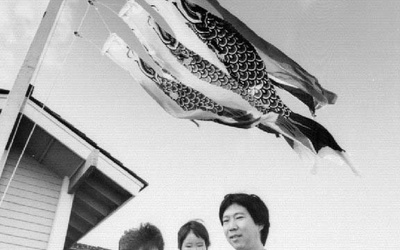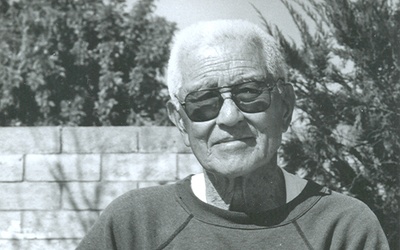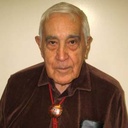
Edward Moreno
@o2gawaraAt 94, Ed Moreno has accumulated nearly seventy years of service in media- broadcast, newsprint, and magazines. Ed has received a number of accolades for his work, as writer, editor and translator. His torrid love affair with Japanese culture began in 1951 and it seems it will never cool off. He is currently writing a column on Japanese-Nikkei cultural and historical topics for the “Newsette,” the monthly organ of the East San Gabriel Valley Japanese Community Center, in West Covina, CA. Before its demise, The East magazine (Tokyo) published some of his original works. He also writes for “Transactions, the Journal of the prestigious Asiatic Society of Japan”
Updated May 2015
Stories from This Author
The Founders III: The Old Man and the Entire Ocean
June 30, 2010 • Edward Moreno
Have you ever read Ernest Hemingway’s famous novella: “The Old Man and the Sea”? It is a tale of stamina and survival in which Santiago, an old, unlucky Cuban fisherman attempts his last catch in the Gulf of Mexico. He lands a gigantic marlin, but despite all efforts, what he brings home is only the skeleton. A pack of sharks that nearly did him in too, ate his gorgeous catch. Had Hemingway met Beans Sogioka in January 2006, when Beans …
MINGEI: Now and Then - Part 2
June 15, 2010 • Edward Moreno
>> Read part 1As if the study of Yanagi’s life and theories hadn’t been sufficient, Tatsuo found a formidable mentor within his own family. His uncle Yoshio Sato—his mother’s brother in Sendai—led him intellectually to appreciate Japanese folk crafts and lore. Uncle Yoshio had done a number of guide shows for NHK, and kept extensive journals on local plants, customs, Tohoku linguistics and other anthropological data. “He was a true amateur anthropologist,” Tats said, totally ignoring that many professional anthropologists …
MINGEI: Now and Then - Part 1
June 8, 2010 • Edward Moreno
Meet Tatsuo Tomeoka, whose website (http://mingei-wasabidou.com/), is most attractive for those interested in the Arts of the People. Tatsuo is a young Nisei born from immigrant Japanese parents in Seattle, in 1961…far away from the time when being of Japanese descent was a capital sin in our country. Without the internment experience in my background, he says, I was never sure if I was a ‘Japanese-American;’ an ‘American of Japanese descent’ or just ‘Japanese’ or ‘American.’ Tats grew up in …
Gambare!
May 20, 2010 • Edward Moreno
Together with the concepts of honor, duty, and self-respect, Gambare—also ganbare—ranks among the top values which characterize the Japanese culture; and you get all kinds of opinions as to whether it means an extraordinary power of determination and endurance, or simple mulishness. Whatever it is, it has proven invaluable in the history of Japanese and Japanese American accomplishment, everywhere. Take the case of Joseph Heco (Hikozo Hamada,) which, to me, appears as one of the finest examples of Ganbare! Born …
Tango no Sekku - Part 2
May 5, 2010 • Edward Moreno
>> Part 1Unlike the elegant, orderly, and colorful setting for Hina Matsuri, the exhibit for Tango No Sekku is an artistic disaster. The arrangement has usually three levels instead of the girls’ seven to nine steps, and it is loosely set on a green carpet or a grass mat. Okay, one can call it a free form, liberal or minimalist tableaux. A heavily decorated kabuto, or the old military helmet, and a set of armor surrounded by arrows, lances and …
Tango no Sekku - Part 1
May 4, 2010 • Edward Moreno
In 1948, during the McArthur shogunate and Tatsu Katayama’s premiership, the Japanese government determined to officially declare May 5th as Kodomo no Hi, or Children’s Day. The government’s intention was to celebrate a special day for children, and to honor their parents. However, since the way to hell is always paved with good political intentions, that decision triggered a big racket from boys, girls, and their parents. Accustomed to celebrating May 5th exclusively as their day, boys felt cheated out. …
The Founders II: Yosh Sogioka Part 2
April 28, 2010 • Edward Moreno
Read Part 1 >>1964 was a crucial year for the ESGVJCC. At the center of West Covina’s “road to progress,” and right smack on the actual path for the Walnut Creek Parkway, the Center’s property was the ideal candidate for an “eminent domain” takeover. The Center yielded, closed that chapter of its life, and went after its current site at 1203 Puente Avenue. The Sogioka counted among the top supporters of the Capital Campaign to acquire the property. Six years …
The Founders II: Yosh Sogioka - Part 1
April 21, 2010 • Edward Moreno
I can’t remember having been formally introduced to him; but shortly after we met, we were talking as if we had been long time buddies. Yoshimaro Sogioka, “Yosh” was the friendliest and most generous person I’ve ever met. Yosh was one of the original founders of the San Gabriel Valley Japanese American Association, later the ESGVJCC. According to his autobiography, he was born in 1916, in Baldwin Park, the chonan- first male child of Sekimatsu and Shiye Sogioka, who immigrated …
The Man Who Raised Green Dragons
April 6, 2010 • Edward Moreno
Right at the center of Chugoku lays the prefecture of Hiroshima, one of the most fascinating, mountainous regions of Japan. The many rivers that cross it have created bountiful plains near the coast. The lovely breezes of the Seto Inland Sea, sheltered within Honshu and Shikoku tame the summer, and help Chugoku enjoy a gentle climate. The locale is home to several important towns; but the village of Umaki goes almost unnoticed. Now small, it was much more so in …
The East San Gabriel Valley Japanese Community Center - The Founders
March 16, 2010 • Edward Moreno
Till you start talking to them, personally, you’ll never know for sure, what brought to life the East San Gabriel Valley Japanese Community Center we so much enjoy. “Them,” of course, is The Founders. Many are already gone, and you kick yourself for not having caught them on tape or video before. Those still around are, to me, our “National Living Treasures,” Kim Hatakeyama among them. At 87, two of his most outstanding characteristics are his infinite patience, and his …

